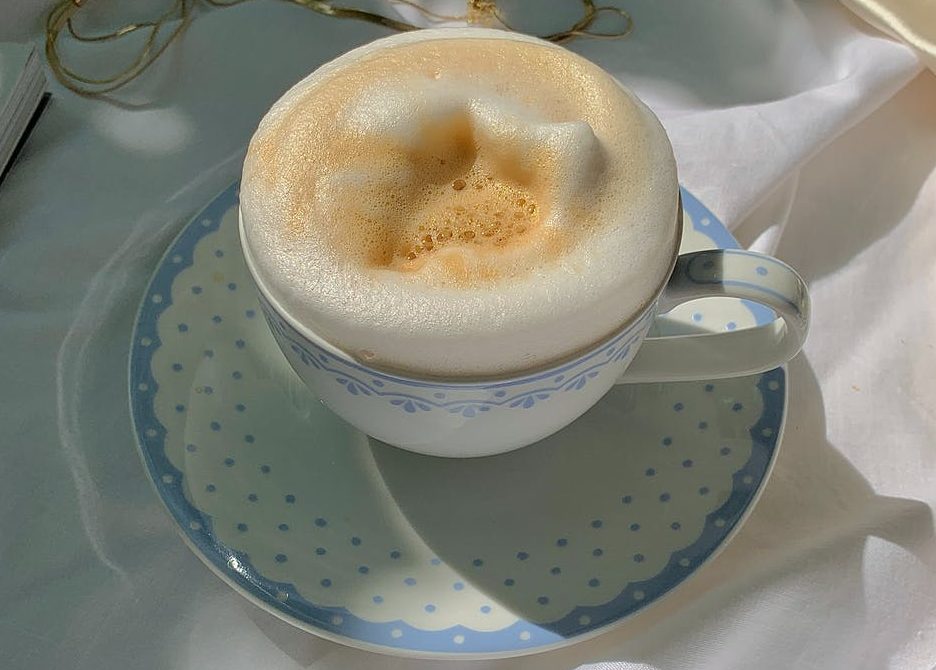There are many espresso drinks to choose from in a coffee shop. The coffee shop menu might seem overwhelming for the unprepared. We baristas, want to cater to every taste. But even so, there are the few customers that always want their coffee drink a little different. But this is how many drinks have been invented.
Today we will look at three cappuccino variants, and how they are different. We will compare the classic cappuccino, to the wet cappuccino and the dry cappuccino. And let's not forget the crazy bone-dry cappuccino. We will also give you the step by step recipes for all three cappuccino variants.
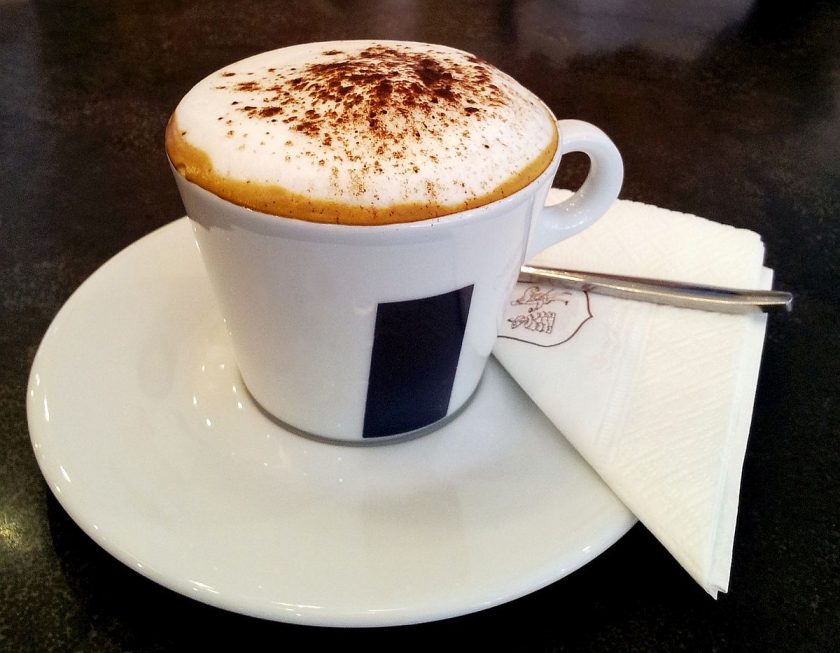
What Is a Regular Cappuccino?
Before we get into a dry vs wet cappuccino comparison, let's touch on the basics of the classic cappuccino.
The regular cappuccino is an Italian beverage, made with one shot of espresso, and equal volume of steamed and foamed milk. The classic cappuccino is one of the most popular espresso drinks in the world.
In a home setting, a cappuccino can be made with an espresso machine for those with a generous budget, but can also be made with an espresso maker alternative, such as the Moka pot, or the AeroPress.
In a coffee shop, cappuccino will always be prepared with an espresso machine, which is the preferred way of brewing it. The 9 bars pressure provided by a pump driven espresso machine ensure a flavor richness unmatched by any other coffee brewing method. Check this article for more on What Is Espresso.
Let's review the basic recipe for a cappuccino: 1/3 espresso, 1/3 steamed milk, and 1/3 frothed milk. It is important to understand that these are volume measurements. As a result, the frothed milk is bears almost no contribution to the taste of the cappuccino, but the milk foam is what we are left at the end of the cup, so that serves as cleansing the beverage's strong flavors. We have an entire article explaining what is a cappuccino and how to make it, where we focus on the classic cappuccino recipe. For a reminder, we have the recipe here too, but we recommend read our other article.
What Is a Dry Cappuccino?
A dry cappuccino is very similar to a regular cappuccino, but with less steamed milk and more foam. It's more intense, because there's not as much milk in the drink.
There are several reasons why people enjoy a dry cappuccino. The milk foam serves as an insulator, so the espresso is kept hot for a longer. As we mentioned, the reduced steamed milk quantity, means a more concentrated espresso drink, with a bolder flavor.
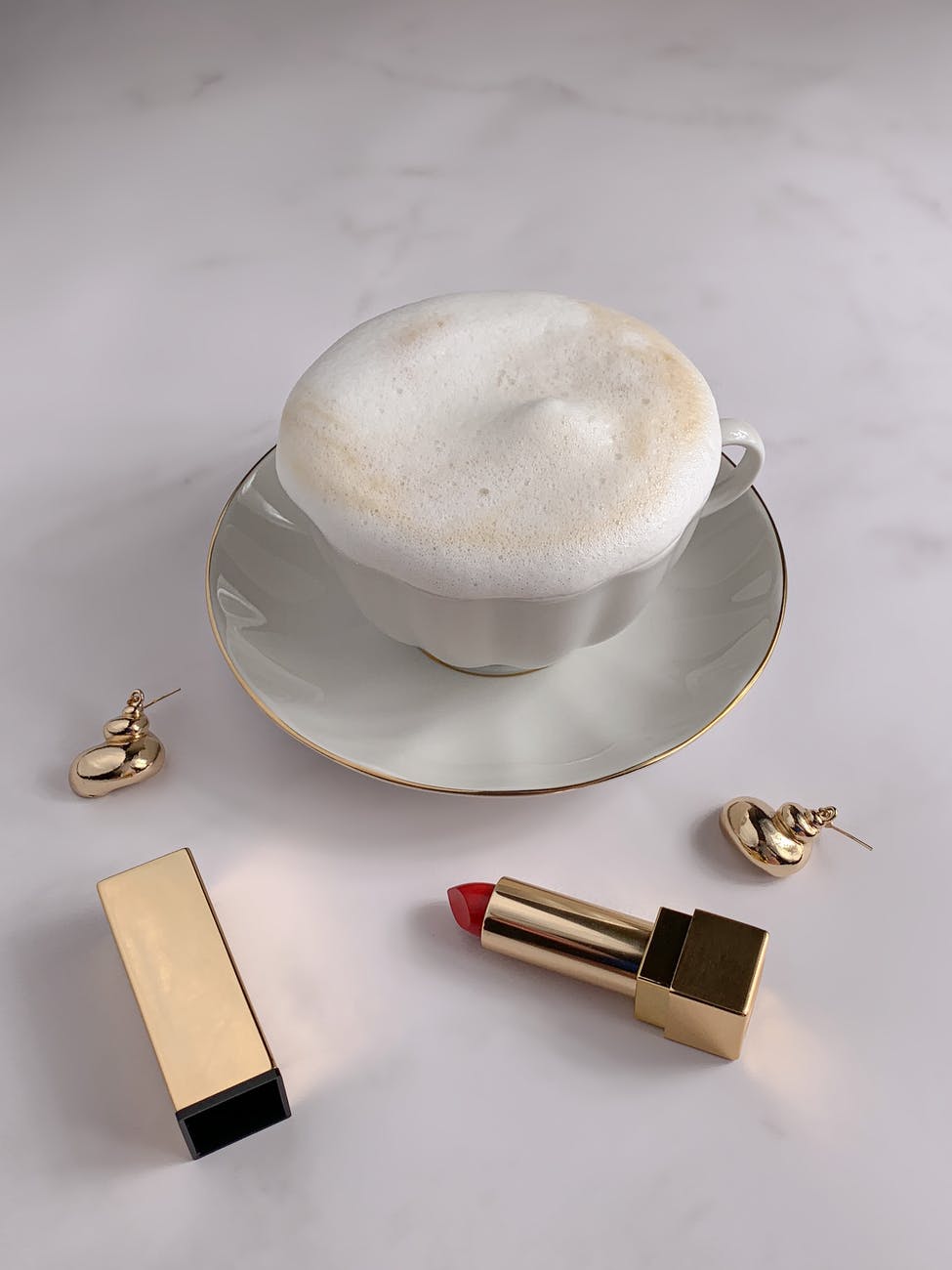
The dry cappuccino is a relatively popular drink and is served in cappuccino cups, as the traditional cappuccino.

Dry Cappuccino
Equipment
- 1 tamper
- 1 kitchen scale
- 1 espresso leveler/distribution tool optional
Ingredients
- 7 grams medium-dark roast coffee beans up to 9 grams depending on the filter basket
- 1.5 oz. filtered, or spring water
- 2/4 cup 2/4 cup cold milk whole, or 2% are the best, but nonfat works too
Instructions
Brew Espresso
- Turn on the espresso machine to heat it up
- Finely grind 7-9 grams of coffee beans to an espresso grind size.
- Place the coffee grounds in the filter-basket.
- Slightly knock the portafilter on the counter to pack and level them. If you have an espresso leveler, use it to perfectly level your coffee puck.
- Tamp the coffee grounds with a considerable amount of pressure. When you are done tamping, there should be about 3-4 mm from the basket's edge to the coffee puck.
- Lock the portafilter in the espresso machine.
- Place a cappuccino cup on the designated spot on the espresso machine tray and and switch the brew button ON.
- Pull your shot for about 20 to 25 seconds.
- You should get about 1 fluid ounces of espresso. If you get considerably more than 1 oz. grind your coffee finer. If you get too little coffee, grind your coffee slightly coarser. Put the espresso aside.
Steam the Milk
- Switch your espresso machine from espresso brewing to milk steaming and let the boiler warm up and reach the needed temperature.
- Pour the milk into a stainless steel pitcher. The milk should be cold as this gives you more time to froth without scalding the milk.
- When the machine is ready for steaming, submerge the steaming wand just below the milk surface and start the the steam.
- Tilt the pitcher at an angle, so that the milk swirls, moving around in the frothing jug.
- As the milk froths and stretches, the foamy part raises up. Lower the pitcher little by little so you make more foam. You want to stay longer near the surface, so the milk creates a froth. If you dip the steam want too low, you won't be able to create froth.
- As the milk continues to heat up and form more froth slightly tilt the pitcher to maintain the swirl. Continue to steam until the side of the pitcher becomes hot – around 155°F.
- Turn off the steam while still holding the tip of the wand under the milk surface.
Combine The Drinks into a Cappuccino
- Using a spoon, hold back the foam and pour 1/2 fluid ounce of the steamed milk over the espresso.
- Spoon the foam on top of the milk, filling up a the rest of the cup with the foam.
- Decorate with chocolate shavings, cocoa powder, cinnamon or chocolate syrup, and serve hot.
Notes
Nutrition
Bone Dry Cappuccino
Although a bone dry cappuccino might seem like the dry variant sibling, it is in fact a totally different drink, and we'll show you why.
Bone Dry Cappuccinos have once again a shot of espresso at the bottom and a really thick layer of milk foam. That's right! Only espresso and milk foam. There is no steamed milk at all so that is why it is called bone dry.
Most cafes won't serve you a bone dry cappuccino without asking for it. Why? Because it's a pain for baristas to prepare. Thoughtcatalog has a funny and passionate article on drinks that should never be ordered, and bone dry cappuccino is one of them. Not only is very hard to obtain the huge amount of milk foam for a serving, but it's also wasteful. All the steamed milk that comes with the foam is wasted.
As a drink, a bone dry cappuccino is closer to a macchiato than a cappuccino. The low quantity of milk in the beverage, makes the drink almost a plain espresso, the foam milk doesn't contribute much to the beverage taste.
What Is a Wet Cappuccino?
The wet alternative to a regular cap is an opposite of a regular dry cap. It has more steamed milk than espresso, and it has no added foam at all. It is sweeter and more mellow than a regular dry cap, because there is more steamed milk. If you prefer no foam at all, there is also the “super wet” cappuccino.
Wet or super wet cappuccinos are served in normal cappuccino cups, as the milk foam is replaced with steamed milk, so the volume remains the same.
The extra milk in the wet cappuccino tones down the intensity of the espresso shot. This is great for people who like the texture of a latte, but find the latte too large of a drink, and too diluted.
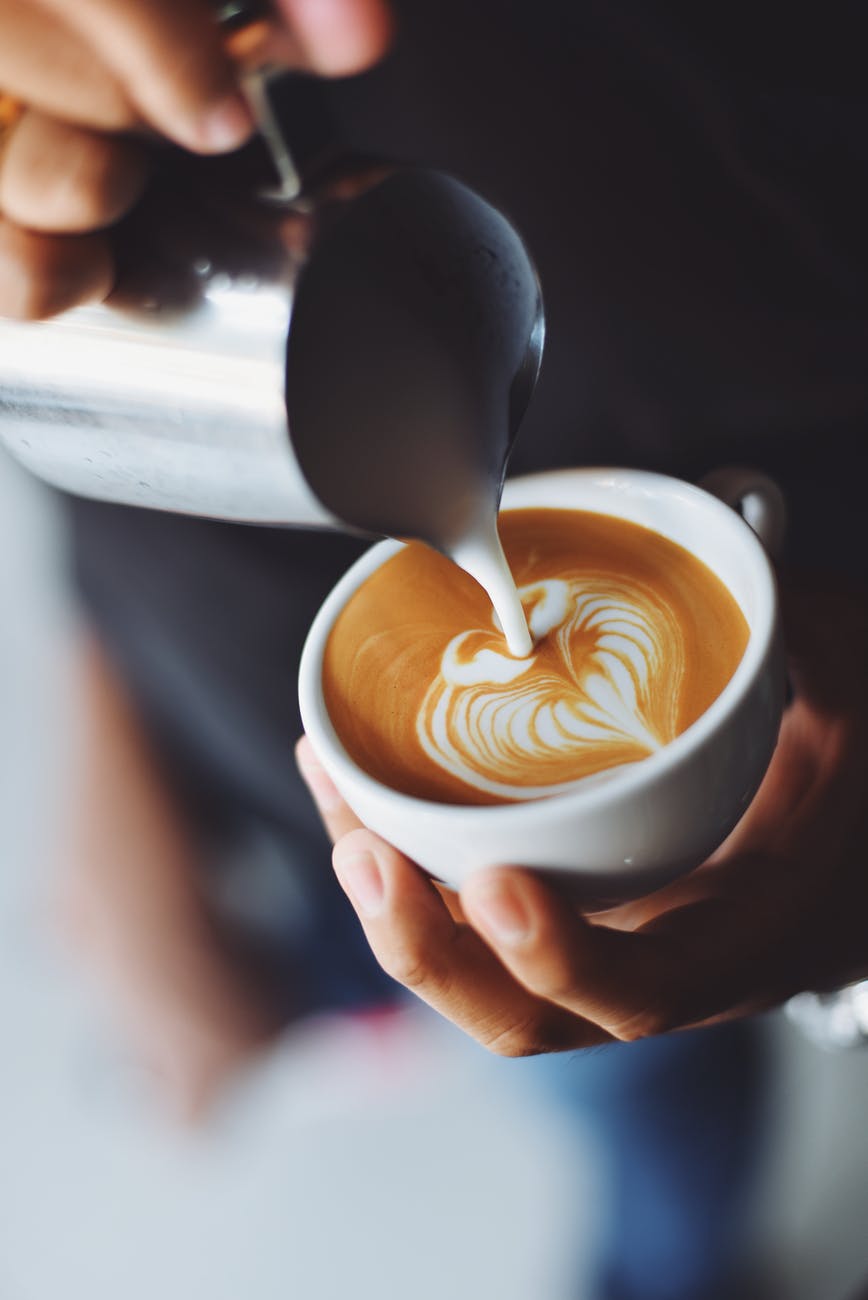
Photo by Chevanon Photography on Pexels
A wet cappuccino is an espresso-based beverage in between cappuccino and latte. If we were to chose another espresso drink that is similar to wet caps it's the piccolo latte.
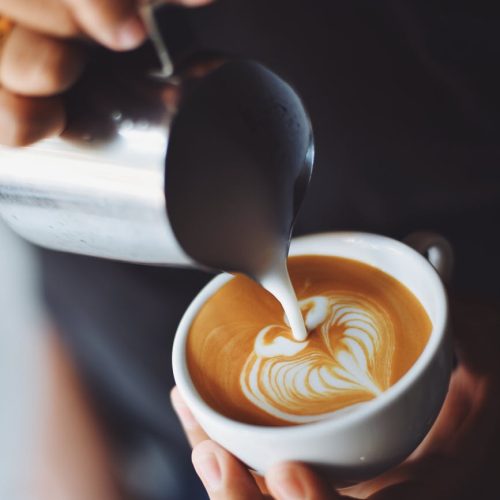
Wet Cappuccino
Equipment
- 1 tamper
- 1 kitchen scale
- 1 espresso leveler/distribution tool optional
Ingredients
- 14 grams medium-dark roast coffee beans up to 18 grams depending on the filter basket
- 1 tsp. cocoa powder
- 3/4 cup 3/4 cup cold milk whole, or 2% are the best, but nonfat works too
Instructions
Brew Espresso
- Turn on the espresso machine to heat it up
- Finely grind 7-9 grams of coffee beans to an espresso grind size.
- Place the coffee grounds in the filter-basket.
- Slightly knock the portafilter on the counter to pack and level them. If you have an espresso leveler, use it to perfectly level your coffee puck.
- Tamp the coffee grounds with a considerable amount of pressure. When you are done tamping, there should be about 3-4 mm from the basket's edge to the coffee puck.
- Lock the portafilter in the espresso machine.
- Place a cappuccino cup on the designated spot on the espresso machine tray and and switch the brew button ON.
- Pull your shot for about 20 to 25 seconds.
- You should get about 1 fluid ounces of espresso. If you get considerably more than 1 oz. grind your coffee finer. If you get too little coffee, grind your coffee slightly coarser. Put the espresso aside.
Steam the Milk
- Switch your espresso machine from espresso brewing to milk steaming and let the boiler warm up and reach the needed temperature.
- Pour the milk into a stainless steel pitcher. The milk should be cold as this gives you more time to froth without scalding the milk.
- When the machine is ready for steaming, submerge the steaming wand just below the milk surface and start the the steam.
- Tilt the pitcher at an angle, so that the milk swirls, moving around in the frothing jug.
- As the milk froths and stretches, the foamy part raises up. Lower the steaming wand little by little in the pitcher until you reach the bottom. You want to advance quicker than with the classic cappuccino, to avoid creating too much milk foam.
- As the milk continues to heat up and form more froth slightly tilt the pitcher to maintain the swirl. Continue to steam until the side of the pitcher becomes hot – around 155°F.
- Turn off the steam while still holding the tip of the wand under the milk surface.
Combine The Drinks into a Cappuccino
- There should be almost no milk foam in the pitcher. Pour the steamed milk over the espresso, creating a design with the foamier part of the milk.
- Serve hot.
Notes
Nutrition
Make it Your Own
As with all other espresso drinks, you can personalize your cappuccinos by picking the type of milk you want, be it dairy or non dairy, skimmed or not. Although cappuccino in Italy is served without any flavorings, you can add some if you want. Adding sugar is not frowned upon, but the steamed milk has its own sweetness, so you might not need it.
Conclusion
So, now you know a little more about cappuccino and if you are ever in the presence of a coffee drinker, you have some knowledge that you can brag about.
If anyone asks “what the heck is bone dry cappuccino”, you can rudely cut them off just as they are about to speak and let your newfound knowledge flow their way!
And finally, if your local shop barista gives you the death stare when you order that bone dry cap, just make it at home, you have the recipe now.
